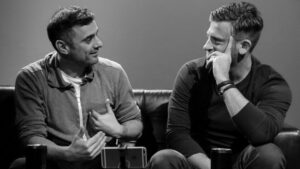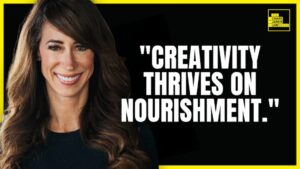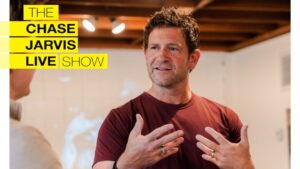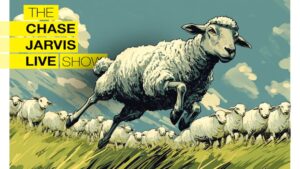Life doesn’t come with an instruction manual, but this is pretty close. Creative expert Julia Cameron recently released her latest book, ‘Living the Artist’s Way‘, which delves into the importance of nurturing our inner creativity. I’m beyond excited to have her back on the show to discuss this project along with some of her other insightful works.
Morning Pages vs Writing for Guidance
I start this conversation with Julia Cameron by discussing a staple of her creative process: morning pages. It’s an incredibly valuable practice that I and countless other readers have used for years. You start the day by writing three pages of longhand writing about virtually any topic. What comes out tends to be whatever is top of mind, so the final product can be very reflective of your current thoughts and feelings.
In her latest book, Julia prescribes a new, similar process designed to evoke its own kind of creative results. ‘Guidance’ is all about pinning down the specific things you want to address and consciously pursuing solutions. The key difference between this and morning pages is that guidance focuses on specificity. In many cases, one can inspire the other.
Asking the Right Questions
On the topic of asking the universe questions, I probe Julia for some meaningful ones we can use ourselves. She says a majority of people center their queries around ‘what’ they can do about something. That something may be a career challenge, personal problem, or a creative block. The second question most people pose, she says, is more of a request. We don’t just need a problem and solution identified, but direct instructions on what to do next.
Oftentimes, the answer lies in our mindset or emotional perspective. A lack of patience, for instance, may be hindering us from tapping into our creativity. We need to process why we feel the way we do in order for our minds to be fully free.
“When you say being a good artist, you’re talking essentially about openness and you’re talking about feeling connected to all the different parts of yourself.” She says. “I think when you are asking questions, you’re saying, ‘Okay, I’m ready. Tell me what I need to know’. The answers to the questions give you a platform on which to stand when you make your art.”
Julia says that a lot of this has to do with being open and accepting of who you are. It’s no secret that the creative field is critical. Regardless of what discipline you’re in, there will always be people out there ready to nitpick. Even worse, we all have our own inner critic that can be even more harsh and judgmental.
“I think we all have an inner critic… a harsh voice that says things like, ‘You must have discipline’,” Julia says. Even the creative maverick herself has one. She calls him Nigel.
“Nigel, uh, is always saying hurtful things to me. Nigel says, ‘Oh, Julia, you’re boring’, or ‘Oh, Julia, you’re repetitive’, or ‘Oh, Julia, fill in the blank’, and I have learned over the years that Nigel backs down if you confront him. What we [need to] do with this critical inner voice is we need to not believe it but to disbelieve it. To say to the inner voice ‘Thank you for sharing, but I’m going to keep right on writing as I have been writing’.”
Embracing Play and Gentleness
What tool do you consider essential to your creative work? A camera might be my logical answer, but Julia highlights another that artists of every nature should come to the drawing board with first – gentleness. It’s a conductive element for creativity.
As creatives, we often put a lot of pressure on ourselves to produce something meaningful and impactful. We strive for perfection and may become frustrated when our work doesn’t meet our own high expectations. This can lead to burnout, self-doubt, and even creative blocks.
But what if we took a step back and approached our work with gentleness? What if we allowed ourselves to play and experiment without judgment or pressure? This is where true creativity can thrive.
It doesn’t always feel natural, of course. The world we live in is very judgemental, to the point where we naturally assume there’s no place for us. Who do you think you are? Don’t you think you’re getting a little too big for your britches?
This fear of looking foolish, of looking ridiculous, is a fear that plagues virtually everyone in the creative community. Julia’s exercises are designed to confront it by leaning in on the connection between work and play. The former should be fun, especially if you’re pursuing a career as an artist.
The responsibilities of day-to-day life will have our workaholic selves calling all the shots. While that may serve short-term needs well, it stifles creativity. We’re not listening to the part of our being that genuinely wants to create. The inner kid. Letting them come to the table is critical for those spurs of imagination.
“We’re all kind of sick of talking about the inner child, but I do think that the part of us which creates is youthful,” she says.
Living a fulfilled existence isn’t easy. At least not in today’s world. Luckily for us, we have people like Julia Cameron to help us find our way. I highly recommend reading her latest book, ‘Living the Artist’s Way’ and trying out her exercises. They may just help you break through those mental barriers holding you back from living a truly creative life.
FOLLOW JULIA:
twitter | instagram | website





















